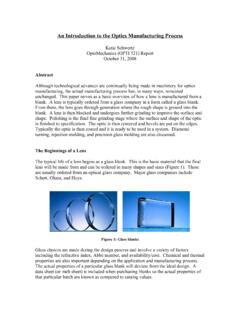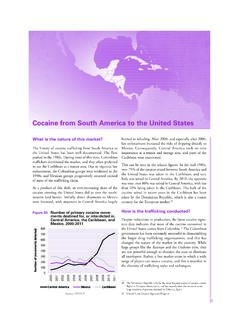Transcription of Unity-Photogrammetry-Workflow 2017-07 v2
1 Author: S bastien Lachambre, S bastien Lagarde, Cyril Jover, Developer - Rendering Research Date: 2017 06 23 photogrammetry workflow unity photogrammetry workflow 1 Contents 1. Overview Introduction Game photogrammetry workflow overview 2. Equipment and Software Equipment Software 3. Acquisition The 3 W s: What, Where and When? What ? Where? When? Video or photos ? Camera setting 4. Capture process How to capture an object (except small ones) Assets selection Shoot How to capture a surface Prepare the area Shoot Detail textures How to capture a small object Set up a support Shoot How to capture the diffuse albedo only How to capture foliage 5.
2 Processing Images processing - DCraw & Photoshop Determine photo set required for reconstruction Convert RAW to TIFF White balance unity photogrammetry workflow 2 Reconstruction - Reality Capture Add all images Align images Check the components Frames from video Control points Set a scale Create the model Colorize or texture Simplify Mesh export Create a low resolution mesh for baking - 3dsMax Tileable surface Detail material Object Geometry UV layout Textures baking - Knald - Xnormal - Designer Knald workflow Xnormal workflow Substance Designer 6 Remove lighting - unity - Photoshop unity Photoshop Tileable material - Artomatix - Substance painter Artomatix Substance painter Create a game asset - 3dsMax Foliage - Photoshop Base color Normal map unity photogrammetry workflow 3 1.
3 Overview Introduction What is photogrammetry ? photogrammetry is the process of authoring a digital asset using multiple photos of the original real-world object. There are different uses for photogrammetry , and the workflow can vary depending on the context. This document aims to describe a photogrammetry workflow dedicated to authoring game assets with an affordable budget for a game studio. While it is possible to create extremely high quality assets for non-game usage using photogrammetry , this documents focuses on using photogrammetry for game development, and therefore describes how to get the best results within the typical time and budget constraints of game development.
4 A selection of equipment and software is listed in the next section, which provide a balance between efficiency, cost and quality. Game photogrammetry workflow overview The workflow is divided in two major parts: Capture and processing. Capture is about taking photos of an object covering all of it. Processing is about generating the mesh and texture data from the photos. Capture The first step is to gather multiple photos of the object from various angles. It is also necessary to gather extra information for reference, scale metric and correctly exposing the photos.
5 unity photogrammetry workflow 4 Processing First the photos need to be calibrated (white balanced), then sent to a reconstruction application. The reconstruction application compares the shapes in the photos (Alignment) to generate a high resolution 3D mesh. The color contained in the pictures is then transferred to either the mesh s vertex colors (Colorize) or to textures used on the surface of the mesh. Note: The reconstruction software may generate a very high-resolution mesh, which is not suitable for use in real time engines, therefore it s necessary to generate a lower resolution for this purpose.
6 It is possible to create a lower resolution mesh while preserving the details of the high resolution mesh by generating a normal map with baking tools. The baking tools will transfer high frequency information from the high resolution mesh to the low resolution mesh s normal map textures. Next, a low resolution mesh for the baking process need to be created: A medium to low resolution mesh is exported from the reconstruction software and modified in a 3D software tool to be use as destination of the baking tools (Retopology and UV layout step).
7 Baking tools are then used to generate textures. Then, the textures need to have light removed. This is because the textures are generated from real world photos, which will inevitably have visible lighting and shadows present. To be able to have an asset work in any lighting condition, it is required to remove the lighting (light removal step, a step also know as de-lighting) information baked into generated textures. Sometimes in this step the textures are also made tileable. Finally the low resolution mesh for baking is converted to a game ready mesh (Mesh with correct orientation, pivot and uv set) in a 3D software application.
8 unity photogrammetry workflow 5 Production time photogrammetry is a very efficient way to author high resolution meshes and textures, but it does not help out with other processes which are necessary for game mesh preparation (such as the retopology step, UV layout step). Whether or not it saves time compared with traditional 3D asset authoring depends on the complexity of the object in question. Using the photogrammetry process in production is not a simple task as it varies according to the object s complexity and retopology time.
9 It is usually a win but it can be difficult to quantify the time saved. Here are some rough examples of the potential time saving when using photogrammetry : unity photogrammetry workflow 6 2. Equipment and Software Equipment The following is a recommended list of equipment to capture good data for high quality photogrammetry . You can also use this as a checklist each time the team travels to a shooting location. unity photogrammetry workflow 7 1- Camera: Canon 6D. Technically any camera can be used for photogrammetry , even a phone camera.
10 However for best quality it is important to have a camera that allows you to capture high resolution sharp images. A full frame camera is recommended. High resolution also means that fewer photos are required for the reconstruction process. 2- Lens: Sigma 24-70 mm EX-DG HSM unity photogrammetry workflow 8 In a natural environment some objects can be inaccessible, too far or too close. It s then easier to have a variable zoom than a fixed focal length lens to capture objects. The software we recommend for reconstruction (below) works fine with photos of various focal length.

